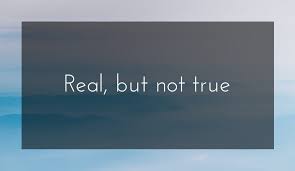
According to Tsoknyi Rinpoche, a most beloved contemporary Tibetan Buddhist meditation masters, to have an open heart and open mind we must develop a deeper understanding of the patterns that drive our thoughts, feelings and behaviors. Then we will not so easily surrender to the impulse to blindly follow them.
I happened to be reading his book, Open Heart, Open Mind: Awakening the Power of the Essence Love, as I was crossing the International Dateline around the Bering Straits on my way to Tokyo to teach a class on Images. (The Pathwork terms for false beliefs and conclusions formed in early childhood.)
Tsoknyi Rinpoche continues to say that patterns are hard to change, especially the ones that are embedded in our unconscious or even our pre-verbal nervous systems. This reminds me of Pathwork Lecture #201, which I am preparing to teach. It talks about the negative force field that images create as they go unexamined. The lectures defines images as a “force field of distorted ideas”. “… it is like a deeply imprinted motor mechanism set in motion with great energy. Thus a stronger energy is required to deactivate this motor force and change the negative force field into a positive one.”
After going through the hard work of uncovering your patterns or images, Rinpoche suggests a mantra, which is a time honored method of talking to your thoughts and feelings. Sometimes called prayer, it is a means of opening up a conversation between the heart and the mind. His mantra is a simple four word phrase: Real, But Not True.
What I love about this prayer is that it acknowledges the young one in us who came up with this group of distorted ideas and conclusions. To this young one our conclusion about ourselves, about life, about God are absolutely real. But as we shine a light on them with our adult consciousness they are also absolutely not true.
To find images we have to look back on our lives, the ways we define ourselves, the pressures that were applied by the people around us and the culture in which we were raised.
In the process of teaching Images in Japan my husband and I find our intertwined images, which are always at work in relationships. My image: “If I am sick and suffering then I will get the attention I need.” This comes from my young one who watched my mother, sick and suffering and sucking all the attention and energy out of our household, leaving none left for me. It seems so clear to my little one if I can be sick like my mother then all that attention will be mine. Of course the attention I want the most is from my husband. His image: “My attention does not matter or will be used by others to manipulate me” I try desperately to get his attention and he tries desperately to avoid being manipulated by me by withholding it. And round and round the negative force field we go.
This is a spectacular example of the truism: we teach what we most need to learn!
Sometimes images or patterns help us avoid feelings like being alone and neglected in my case or being invaded and used in my husband’s. But I also learned while teaching that sometimes images are put in place as a sacrifice to try and save our families. One student took the blame for everything that ever happened in his family. He sacrificed his need for fairness and justice. This was a huge sacrifice. When he realized what he had done he wailed with grief. We all know how important fairness is to children.
Tara Brach has more to say about Real, but not true. “What this means is that, while thoughts are really happening and there is a real biochemistry that accompanies them, they are only representations in our mind. They are not the experience of this living moment. We can begin to identify and challenge limiting beliefs by starting with the simple question: What am I believing right now? And then: Is this true? Is it possible that this is real but not true? Our beliefs fuel our sense of separateness. Uninvestigated, they are a veil between us and reality; they actually prevent us from seeing truth.”

